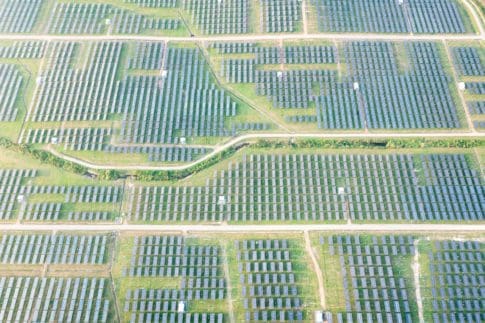Technological advancements in new ways of producing and consuming energy have historically enabled economic growth. In this proposal, Hausman lays out the rationale for substantially increasing federal spending on clean energy research and development (R&D), along with four foundational pillars for energy innovation policy to leverage effective investment:
- Spend triple the federal support for energy R&D;
- Prioritize clean energy, with a secondary focus on energy security;
- Allow for risk-taking in project selection, and expect (and learn from) some project failures; and,
- Draw on the expertise of the US Department of Energy, the Advanced Research Projects Agency-Energy, and the national laboratories.
In this proposal, Hausman argues that this approach to federal spending on R&D—portfolio-based project selection where some high-risk projects within the broad portfolio may well fail—will jump-start innovation, correct market failures, enhance energy security, and enable a more cost-effective transition to a climate-responsible economy.
Issue Overview
Energy markets play a key role in the US economy at both a micro and a macro level. Energy expenditures are an important—and volatile—factor in household budgets and business input costs. What is more, energy production and consumption remain the largest source of climate-damaging pollution in the US economy—amounting to $1 trillion in economic damages annually.
The Inflation Reduction Act (IRA) and other federal, state, and local initiatives are putting the United States on a path toward a clean energy transition while providing safety nets for communities that would otherwise be left behind. The innovation policy in this proposal would complement—and indeed even accelerate—these existing efforts to enable a low-cost transition that benefits the planet and spurs economic growth.
The Challenge
In energy policy, the more things change, the more they stay the same. The United States has seen decades of energy boom-and-bust cycles, with volatile energy prices and the rise and fall of different energy sectors. In fact, energy expenditures are more volatile than the expenditures on other major categories of consumer goods and services, a challenge for households and companies alike. The United States spends $1 trillion on energy each year and millions of US households spend 20 percent or more of their income on energy goods and services.
Yet, while the energy sector has been the primary contributor to a dangerously changing climate, it is also true that energy innovations can drive well-being and economic growth. There is widespread agreement that government support for clean energy innovation can bring numerous economic and environmental benefits by correcting multiple market failures.
In the past, publicly-funded research in the United States has led to valuable advances in energy technologies. But the US has fallen behind in energy innovation, according to both measures on inputs (e.g., the portion of GDP spent on energy R&D) and outputs (e.g., clean energy patenting). Legislation including the IRA, the CHIPS and Science Act, and the Bipartisan Infrastructure Law represent a move in the right direction, but more federal investment in R&D is still needed.
The Proposal
In this Hamilton Project policy proposal, Hausman lays out a rationale for substantially increasing federal spending on clean energy research and development (R&D), along with guiding principles for how the money should be deployed. She proposes four foundational pillars for energy innovation policy to leverage effective investment:
- Spend triple the federal support for energy R&D;
- Prioritize clean energy, with a secondary focus on energy security;
- Allow for risk-taking in project selection, and expect (and learn from) some project failures; and,
- Draw on the expertise of the US Department of Energy, the Advanced Research Projects Agency-Energy, and the national laboratories.
New policymaking should incorporate these principles. In addition, benefits are maximized when these principles are paired with complementary climate policies, such as carbon pricing or emissions regulation or abatement subsidies. Complementing investment with implementation support is clearest for those policies that:
- Aid with deployment and adoption of new energy technologies;
- Correct environmental externalities; and,
- Support communities who might otherwise be harmed by the transition to new energies.
Hausman argues that the approach outlined in her proposal would jump-start innovation, correct market failures, enhance energy security, and enable a more cost-effective transition to a climate-responsible economy.
Hausman stresses a fact about effective R&D funding that makes policymakers wary: high risk leads to high rewards. In choosing projects for public investment, we should expect the greatest return on the portfolio of projects and we should not limit evaluation as to whether individual investments succeeded. Hausman’s approach argues that if policymakers and implementers were to acknowledge ahead of time that the path to the highest return on R&D investment includes some individual project failures then the overall success of the portfolio becomes the north star.


